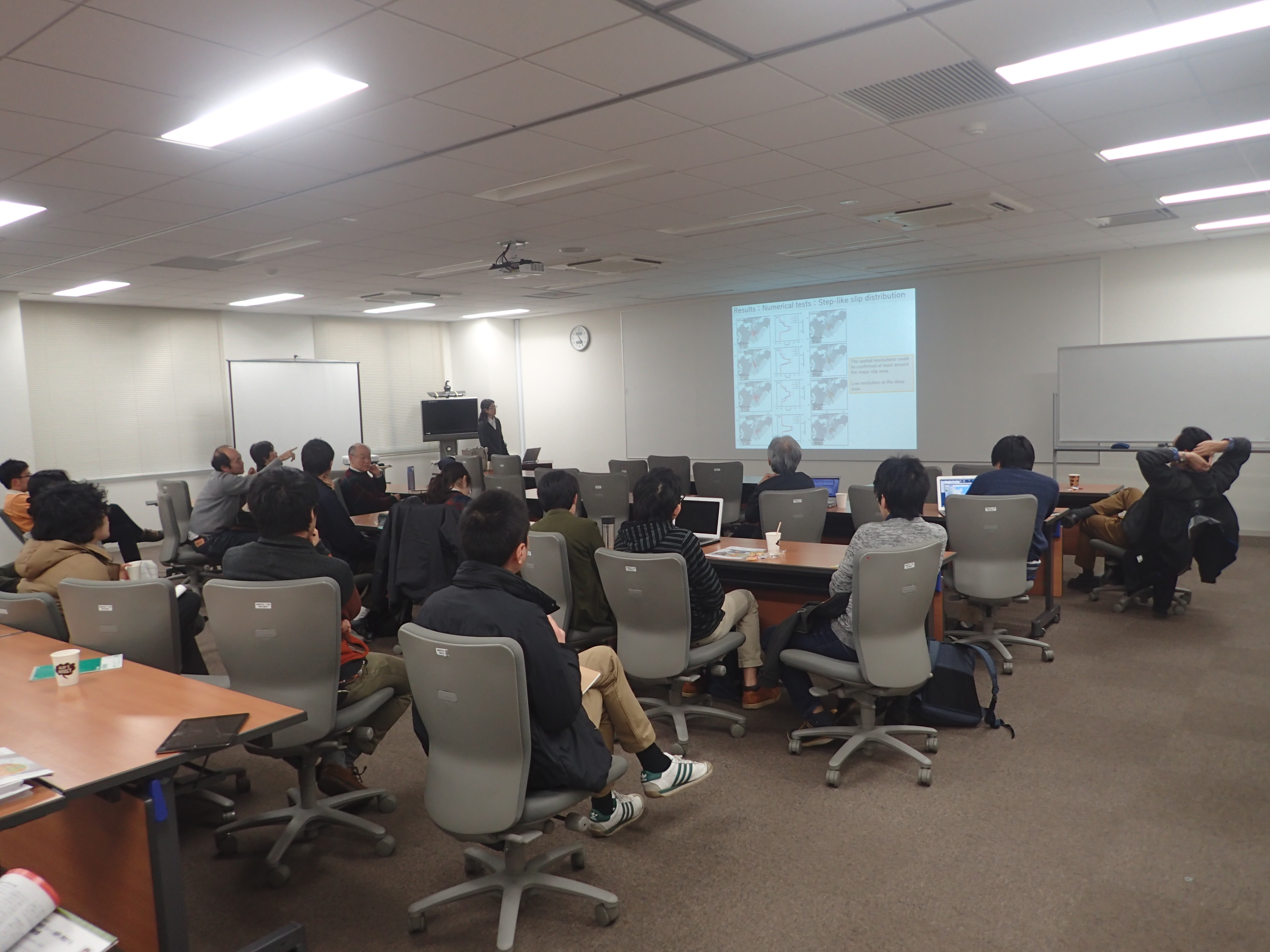Events / Activities2018
2018/12/10-14
Sessions at AGU Fall Meeting 2018
| Meeting | AGU Fall Meeting 2018 (Website) |
|---|---|
| Date | 2018/12/10-14 |
| Abstract Submission Deadline |
2018/08/01 |
| Venue | Walter E. Washington Convention Center |
| Details | Sessions: T025. Interplay between seismic and aseismic slip: Implications for fault physics Section/Focus Group: Tectonophysics T042. Subduction zone processes at the Hikurangi margin, New Zealand Section/Focus Group: Tectonophysics |
2018/10/29
Slow Earthquakes Cafe
Noah Phillips from McGill University will give a talk at ERI.
| Date/Time | 2018/10/29 (Mon.)16:00-17:30 (Refreshments will be served at 15:30) |
|---|---|
| Venue | Seminar room, 2nd floor, Bld. 1, ERI Access Map |
| Speaker | Noah Phillips (McGill University) |
| Topic | "The Life and Death of Frictional Melts (Earthquakes) in the Rock Record: Implications for the Short- and Long-Term Strength of Faults" |
| Abstract | During earthquakes, a number of co-seismic weakening mechanisms are responsible for decreasing fault strength, one of which is frictional melting. Upon crystallization, frictional melts become a strong layer of glass (pseudotachylyte). Previous experiments using dry, felsic lithologies as starting material have shown that pseudotachylytes can be as strong as their host rock, deterring re-activation and favouring their preservation over geologic time. However, we show that where fluid is present, pseudotachylyte can be replaced by phyllosilicate-rich layers with a low frictional strength. The rate of dissolution is dependent on the bulk composition of the pseudotachylyte, with dissolution of mafic glasses occurring at least three orders of magnitude faster than felsic glasses. Under hydrothermal conditions, the replacement of pseudotachylytes by layers of frictionally weak phyllosilicates is predicted to occur over time intervals shorter than the megathrust earthquake cycle. This process likely reduces fault strength and promotes reactivation. |
2018/10/01
Slow Earthquakes Cafe
Dr. Heidi Houston from University of Southern California will give a talk at ERI.
| Date/Time | 2018/10/01 (Mon.)16:00-17:30 (Refreshments will be served at 15:30) |
|---|---|
| Venue | Seminar room, 2nd floor, Bld. 1, ERI Access Map |
| Speaker | Dr. Heidi Houston (University of Southern California) |
| Topic | "Evolution of stress and strength through slow slip and tremor cycles" |
| Abstract | Slow slip extended updip of tremor during six large (M~6.8) ETSs in northern Cascadia, based on inversions of GPS displacements with a realistic plate interface. Our results (Hall, Houston and Schmidt, 2018, G-cubed) indicate that slow slip of up to 2 cm extends updip of tremor by about 15 km beneath the Olympic Peninsula. In these ETSs, slow slip extends from the downdip portion of the tremorgenic region beyond the updip extent of tremor, although still downdip of the inferred locked megathrust. Slip updip of tremor is a persistent feature of all six ETS events. Restricted inversions that permit slip to occur only in the regions that generated tremor produced slip distributions with unphysical characteristics, such as 8 cm slip concentrated at the updip part of the tremor footprint. I will discuss two interpretations of this observation. First, farther updip tremor is possible, but has not yet been seen due to the limited observation period. Alternatively, physical conditions (such as pore pressure differences), for example, controlled by the intersection of the crustal Moho with the plate interface, prohibit tremor from occurring updip of that intersection even during substantial slow slip. The first interpretation would follow from an updip extrapolation of observed along-dip trends. Tremor and LFE activity become less frequent towards the updip region, occurring only during the large ETSs (e.g., Wech and Creager, 2011; Sweet, PhD thesis, 2014). This implies that the difference between the strength and stress of tremorgenic patches increases updip, requiring larger stress perturbations to fail. It further suggests that farther updip tremor will eventually be observed during an even larger, but less frequent, ETS than seen so far in the limited record. Although it is appealing to extrapolate these observed along-dip trends, it should be noted that long-term SSEs in Nankai do not appear to activate tremor updip of where it occurs in short-term SSEs, supporting the second interpretation. In either case, the observation of episodic slow slip farther updip than tremor in Cascadia implies that strain in that region adjacent to the megathrust is accumulating more slowly than we might otherwise infer. We further explore how fault stress evolves on the Cascadia megathrust during an ETS, with time-dependent inversions of the 2010 and 2012 events, which propagated along strike in opposite directions under northern Washington. For both events, the slip-pulse nature of the ETS process is clearly imaged by the inversions, with fault patches continuing to slip for several days, but not through the entire duration of the event. Notably, for both events, i.e., for opposite along-strike propagations directions, small amounts of tremor are observed occurring ahead of the slipping region. We hypothesize that the initial bursts of tremor are triggered by the small leading stresses ahead of the propagating slip pulse. Integrated with other observations including tremor sensitivity to tidal stresses (e.g., Houston, 2015), the overall stress drop of the ETSs, and observed along-dip trends in LFE/tremor recurrence periods, the slip inversion results provide additional constraints on stress and strength evolution during large ETSs. I will discuss models of the evolution of strength and stress through entire slow slip cycles that are consistent with observed along-dip trends. |
2018/09/26
Slow Earthquakes Special Seminar@Tsukuba
| Date/Time | 2018/09/26 (Wed.)10:30-11:30 |
|---|---|
| Venue | NIED Access Map |
| Speaker | Prof. Geoffrey Abers (Cornell University) |
| Title | "Recent Cascadia work, related to a volcano project" |
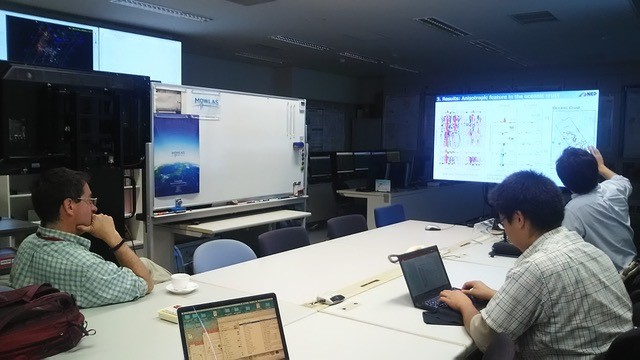
2018/09/26
Slow Earthquakes Cafe
Dr. David Shelly from U.S. Geological Survey will give a talk at ERI.
| Date/Time | 2018/09/26 (Wed.)10:30-11:30 |
|---|---|
| Venue | Seminar room, 2nd floor, Bld. 1, ERI Access Map |
| Speaker | Dr. David Shelly (U.S. Geological Survey) |
| Topic | "Earthquake swarms in high definition: migrating seismicity and fluid-faulting interactions beneath Long Valley Caldera, California" |
| Abstract | Earthquake swarms are common signatures of unrest in both volcanic and tectonic environments. Their interpretation rests upon an understanding of underlying physical processes, yet routine network processing typically provides limited information in this regard. To address this issue, we have developed waveform-based processing that leverages the existing catalog of earthquakes to detect and characterize events absent in routine catalogs. Using large-scale waveform cross-correlation between cataloged events with the continuous data stream, it's possible to detect and precisely locate many times more events than are included in standard catalogs. We have recently extended this technique estimate relative polarities between events, facilitating robust focal mechanism estimation for large populations of tiny earthquakes, addressing a common shortcoming in microseismicity analyses (Shelly et al., JGR, 2016). Application to a 2014 swarm in Long Valley Caldera, California, illuminates complex patterns of faulting that would have otherwise remained obscured. Together, these patterns imply strong interactions between fluid diffusion and faulting processes in the crust. |
2018/09/25
Slow Earthquakes Cafe
Dr. Noel Bartlow from University of California, Berkeley will give a talk at ERI.
| Date/Time | 2018/09/25 (Tue.)15:30-17:00(Refreshments will be served at 15:00) |
|---|---|
| Venue | Seminar room, 2nd floor, Bld. 1, ERI Access Map |
| Speaker | Dr. Noel Bartlow (University of California, Berkeley) |
| Topic | "Mechanics of slow slip events in Cascadia and New Zealand" |
| Abstract | The Cascadia subduction zone in the U.S. and the Hikurangi subduction zone in New Zealand both host slow slip events, but with very different properties including durations, depths, slip amplitudes, and presence of tremor. In this seminar I will review the results from a variety of recent and ongoing studies from both subduction zones, with a focus on applying existing and novel geodetic techniques. I will also discuss the implications of these studies for the mechanics of slow slip and tremor in each subduction zone, and the potential of Episodic Tremor and Slip (slow slip and tremor) events in Cascadia to trigger the next large earthquake in the locked zone. In Cascadia, the tight correlation between slow slip and tremor (Bartlow et al., 2011) provides constraints on the location and timing of expected slow slip signals in geodetic data, allowing me to stack slow slip events and study their cumulative effects in with unprecedented spatial detail. This technique is also useful for constraining plate motions in southern Cascadia, an area with many complex sources of tectonic deformation. I show that in Cascadia, geodetically detectable slow slip is concentrated on the updip end of the tremor region, and over the last 10-20 years slow slip events have only accommodated about half as much slip as would be necessary to keep up with the plate convergence rate. Significant along-strike variations in slow slip behavior are seen in both subduction zones which appear to correlate with some known structures or variations in physical properties along strike. 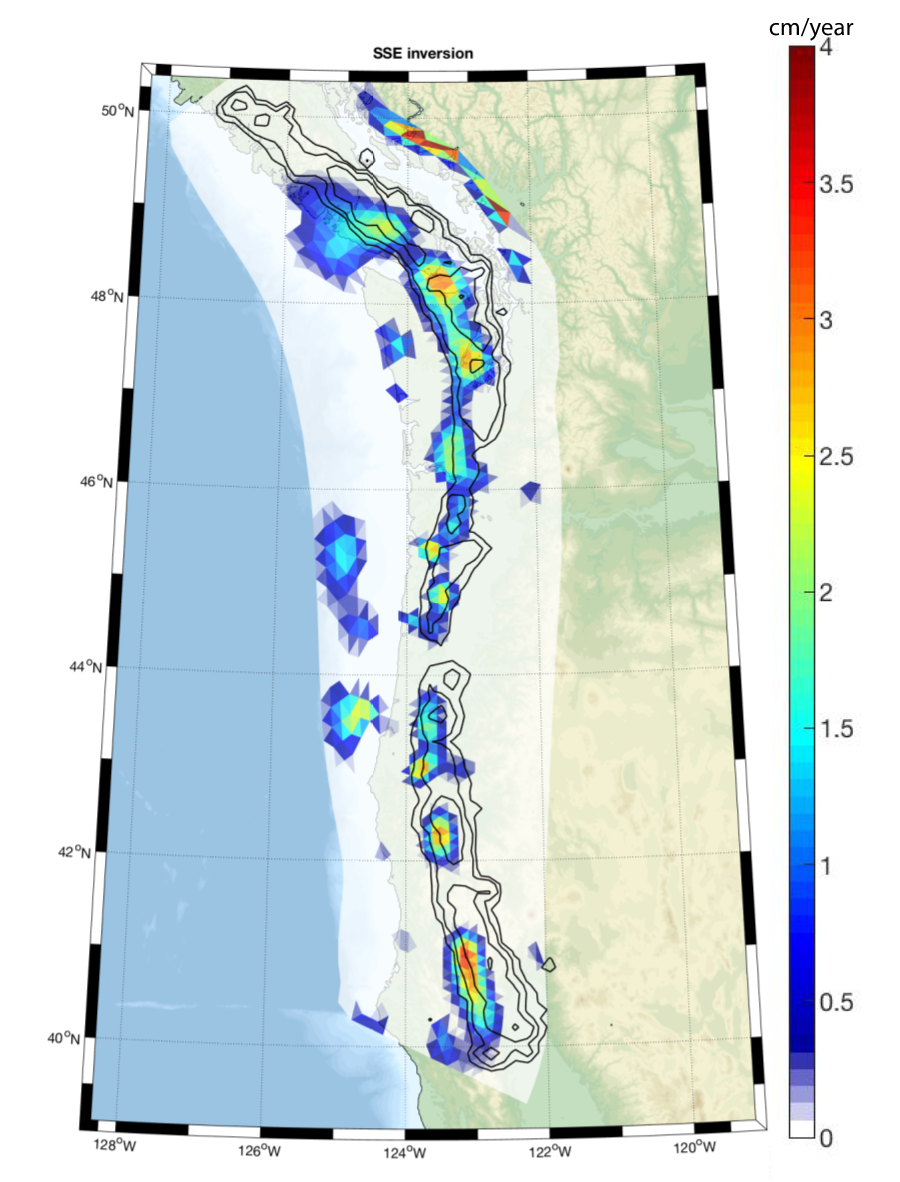 Time-averaged slow slip velocity on the Casacadia plate interface (colors) compared to seismically detected tremor (black contours, modified from Wech, 2010). References: Wech, A. G. (2010). Interactive tremor monitoring. Seismological Research Letters, 81(4), 664-669. |
2018/09/24
Slow Earthquakes Special Seminar@Hiroshima University
| Date/Time | 2018/09/24 (Mon.)17:00-18:00 |
|---|---|
| Venue | Higashi Hiroshima Campus A622, Hiroshima University Access Map |
| Speaker | Dr. Hiroko Kitajima (Texas A&M University) |
| Title | "Experimental constrains on in-situ stress and strength in the Nankai accretionary prism" |
Sep.21-23, 2018
International Joint Workshop on Slow Earthquakes 2018 will be held in Fukuoka city, Fukuoka prefecture.
| Date | 2018/09/21-23 |
|---|---|
| Venue | Details | Field trip (Sep. 24-25, Nagasaki) Workshop site WS2018 poster |
2018/09/20
Slow Earthquakes Special Seminar@Kyushu University
| Date/Time | 2018/09/20 (Thu.)15:00-17:00 |
|---|---|
| Venue | West bldg. 4 910-1, Ito campus, Kyushu University Access Map |
| Speaker | Prof. Jean-Francois Molinari (EPFL, Switzerland) |
| Title | "Evolution of roughness during dry sliding: insights from atomistic and mesocale models" |
| Abstract | 20180920_Abstract_Molinari |
2018/09/18
Slow Earthquakes Cafe
Dr. Ken Creager from University of Washington will give a talk at ERI.
| Date/Time | 2018/09/18 (Tue.)16:00-17:30(Refreshments will be served at 15:30) |
|---|---|
| Venue | Seminar room, 2nd floor, Bld. 1, ERI Access Map |
| Speaker | Dr. Ken Creager (University of Washington) |
| Topic | "Imaging Northern Cascadia slow slip on scales from seconds to weeks and 100 m to 300 km" |
| Abstract | Using the 200-seismometer Array of Arrays we have identified 34,000 low-frequency earthquakes (LFEs) on the plate interface below the Olympic Peninsula, Washington and determined their seismic moments. The LFEs spatially cluster into 45 families with horizontal dimensions of hundreds of meters and separated by gaps ranging from 1 to 20 km. Individual LFEs vary from Mw 0.7 to 2.1 and unlike regular earthquakes, follow an exponential magnitude-frequency distribution with a characteristic moment of 2.0*1011 N-m (Mw=1.5). An exponential moment-frequency distribution implies a scale-limited source process. Seismic Moment equals the shear modulus (which we know) * area (A) * average slip (s). Thus, we have a constraint on the characteristic (mean) value of A * s for individual LFEs within each family. We do not have any direct constraints on A or s for individual LFEs, but we have geodetic constraints on the total slip during Episodic Tremor and Slip (ETS) events (SETS) and we have an estimate of the area of a family patch based on the distribution of individual LFE locations. We consider two end-member models: (1) connected patch model in which individual LFEs rupture different portions of the LFE family patch, but when summed over all LFEs every part of the patch slips the same amount. (2) For the ductile matrix model the patch is divided into regions with no LFE slip, and regions with LFE slip summing to SETS. We explore the implications of these models in terms of stress drop and geologic observations. We find that 0.2% of the geodetically inferred slip is accommodated by LFEs. Down-dip LFE slip occurs through a larger number (800?1,200) of smaller LFEs, while updip LFE slip occurs primarily during ETS events through a smaller number (200?600) of larger LFEs. This could indicate that the plate interface is stronger and has a higher stress threshold updip. A detailed analysis of tremor migration and amplitudes suggests that Episodic Tremor and Slip (ETS) in Northern Cascadia can be broken into a nucleation phase which starts down dip at low amplitude and small area and propagates updip increasing linearly in amplitude and area for about a week before filling the width of the tremor-zone. It then enters a propagation phase in which it propagates linearly along strike, in one or both directions, at 8-10 km/day for up to 4 weeks. The initiation phase is not very sensitive to tidal stresses, but the propagation phase is strongly modulated by tidal stresses. I am especially interested in discussion of physical mechanisms to explain these observations. |
2018/09/18
Slow Earthquakes Special Seminar@Kobe University
| Date/Time | 2018/09/20 (Thu.)14:00-15:00 |
|---|---|
| Venue | Science and Technology Research bldg. 3 620, Ito campus, Kobe University Access Map |
| Speaker | Dr. Vlad C. Manea (Computational Geodynamics Laboratory, Geosciences Centre, National Autonomous University of Mexico) |
| Title | "Slow-slips and tectonic tremors diversity in subduction zones" |
| Abstract | Since their discovery more than two decades ago in Japan and Cascadia, Slow-Slip Events (SSEs) proved to be a rather usual phenomenon rather than an insolated occurrence. SSEs have been observed in many tectonically active regions, mostly subduction zones, including New Zealand, Alaska, Chile, Costa Rica and Mexico. In these regions, SSEs may also manifest by the presence of low frequency seismic signals called Tectonic Tremors (TTs). SSEs (and TTs) are quite variable in terms of duration and recurrence rates, from days and weeks (i.e. Japan and Cascadia) to several months (i.e. Mexico), or even years (i.e. Alaska). This variability manifests also in term of tectonic displacement during SSEs, from few centimeters to the largest reliably detected SSE in Mexico-Guerrero (~10 cm average slip). SSEs and TTs are considered to occur due to the result of metamorphic slab dehydration reactions, however their diversity shows that there might be involved various key controlling parameters. Geodynamic modeling of thermal structure of subduction zones helps us better understanding the conditions for SSEs and TTs occurrence and their variability depending on the subduction setting.modeling of thermal structure of subduction zones helps us better understanding the conditions for SSEs and TTs occurrence and their variability depending on the subduction setting. |
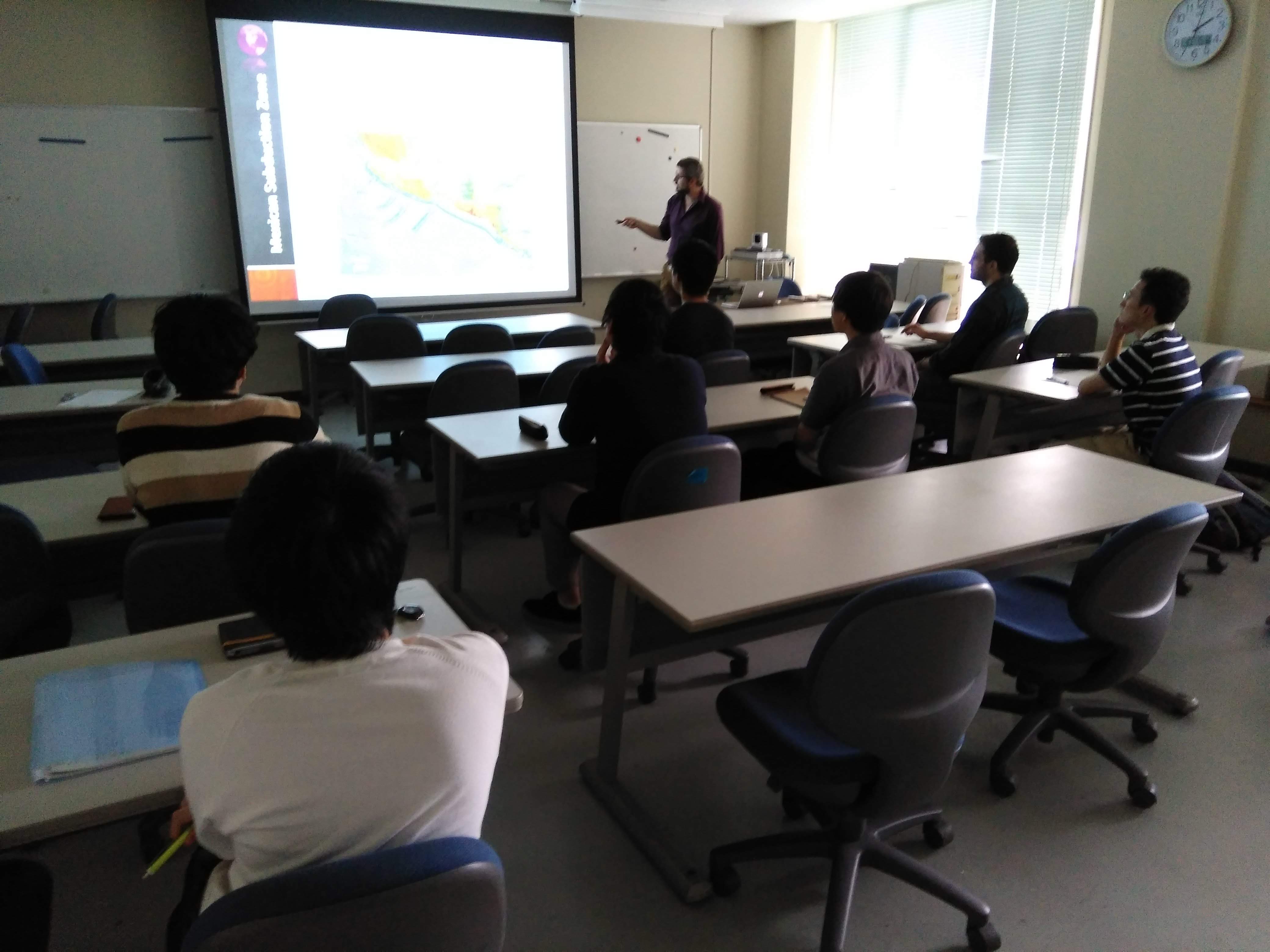
2018/06/03-08
Session at AOGS (Asia Oceania Geosciences Society 15th Annual Meeting)15th Annual Meeting.
| Meeting | AOGS 15th Annual Meeting (Website) | Date | 2018/06/03-08 |
|---|---|
| Abstract Submission Deadline |
2018/01/19 |
| Venue | Hawaii Convention Centre, Honolulu, Hawaii |
| Details | Session SE27: Modeling of Slow and Regular Earthquakes |
2018/06/01
Slow Earthquakes Special Seminar
Dr. Stephen Kirby, Scientist Emeritus and Senior Scientist, U.S. Geological Survey, will give a talk at ERI.
| Date/Time | 2018/06/01 (Fri.)15:00-16:00 |
|---|---|
| Venue | Seminar room, 2nd floor, Bld. 1, ERI Access Map |
| Speaker | Dr. Stephen Kirby (Scientist Emeritus and Senior Scientist, U.S. Geological Survey) |
| Title | Fluid Fluxes from Dehydrating Serpentinized Forearc Mantle: Possible Roles in Non-Volcanic Tremor and Related Phenomena |
2018/05/31
Slow Earthquakes Cafe in Yokohama
Dr. Christopher Johnson of SCRIPPS, University of California San Diego will give a talk at JAMSTEC, Yokohama.
| Date/Time | 2018/05/31 (Thu.)11:00-12:00 |
|---|---|
| Venue | Guesthouse at Yokohama Institute for Earth Sciences (YES), Japan Agency for Marine-Earth Science and Technology(JAMSTEC) Access Map |
| Speaker | Dr. Christopher Johnson (SCRIPPS, University of California San Diego) |
| Topic | Climate modulated water storage, the deformation, and California earthquakes |
2018/05/20-24
Session at JpGU2018.
| Meeting | JpGU2018 (Website) |
|---|---|
| Date | 2018/05/20-24 |
| Abstract Submission Deadline |
2018/02/19 |
| Venue | Makuhari Messe, Chiba, Japan |
| Details | Session: S-CG53: Science of slow earthquakes Booth: A55 |
2018/04/10
The paper by Dr. Junichi Nakajima and Dr. Naoki Uchida was picked up as research highlights on Nature.
2018/03/13
Slow Earthquakes Cafe in Sendai
Dr. Natalia Poiata, researcher at Institut de Physique du Globe de Paris (IPGP), France, and National Institute for Earth Physics, Romania, will give a talk at Tohoku University, Sendai.
| Date/Time | 2018/03/13 (Tue.)13:30-15:00 |
|---|---|
| Venue | C-S407 in the Science Complex C, Tohoku University |
| Speaker | Dr. Natalia Poiata (IPGP, National Institute for Earth Physics, Romania) |
| Topic | An automated multi-scale, network-based method for detection and location of seismic sources: application to regular and slow earthquakes |
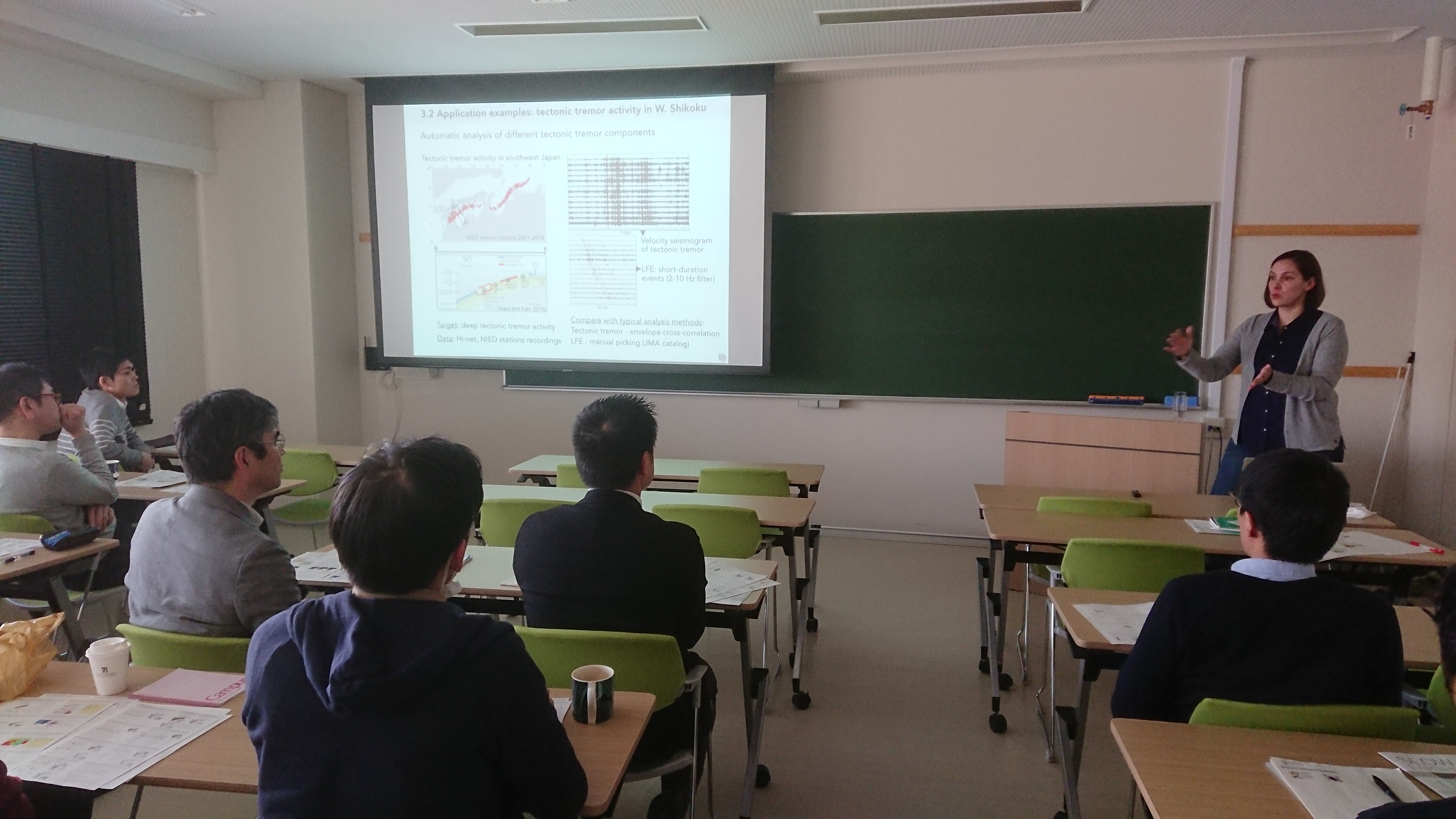
2018/02/26-27
Self-invited workshop Vol. 1 in NZ, "New Zealand-Japan Joint workshop on Slow Slip"
| Workshop | New Zealand-Japan Joint workshop on Slow Slip |
|---|---|
| Date | 2018/02/26-27 |
| Venue | VUW, Rutherford House, Wellington, New Zealand |
| Details | Program Field Trip to Kaikoura earthquake region: 28 February-2 March Field Trip to Wellington Fault: 28 February |
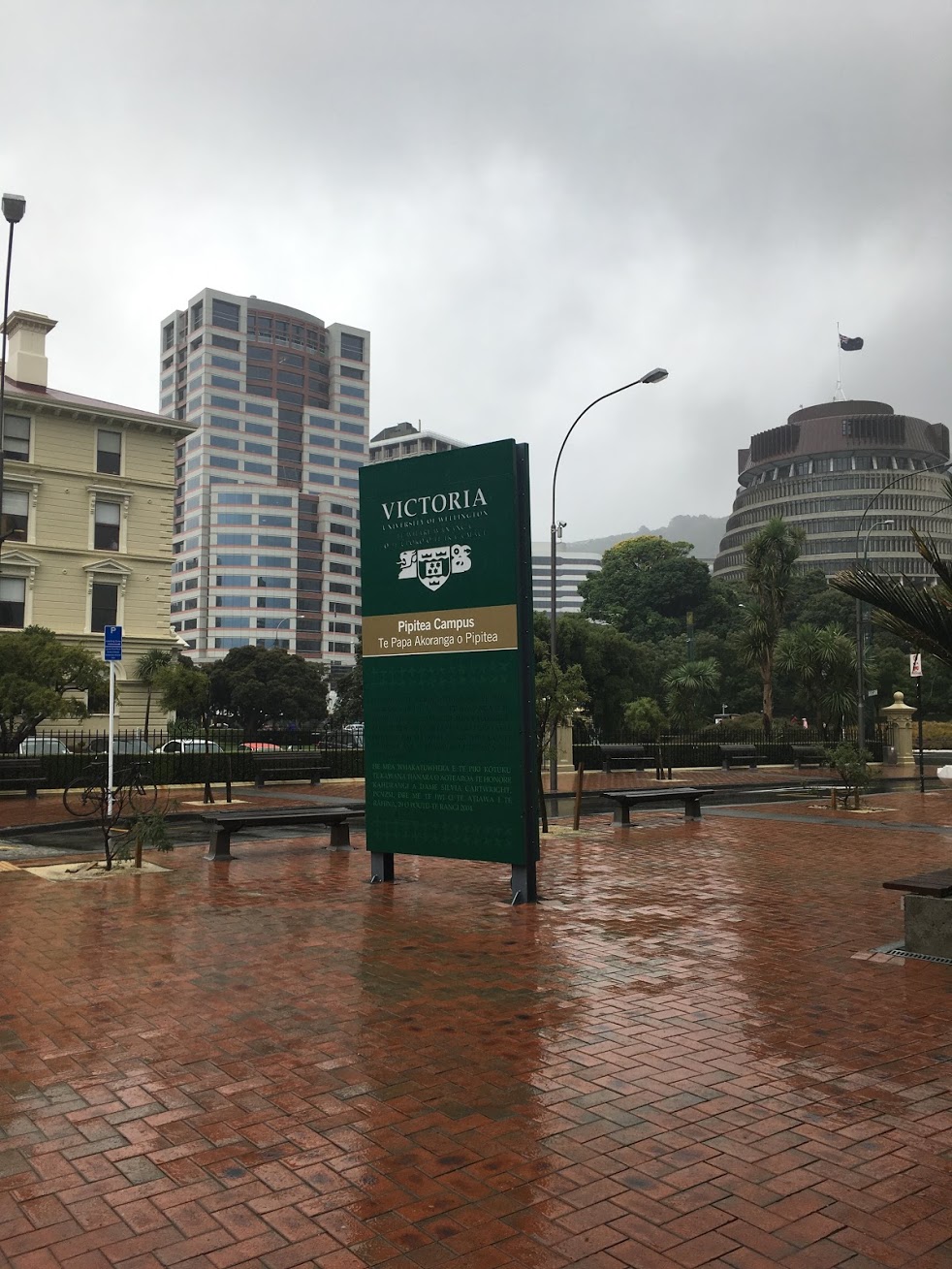
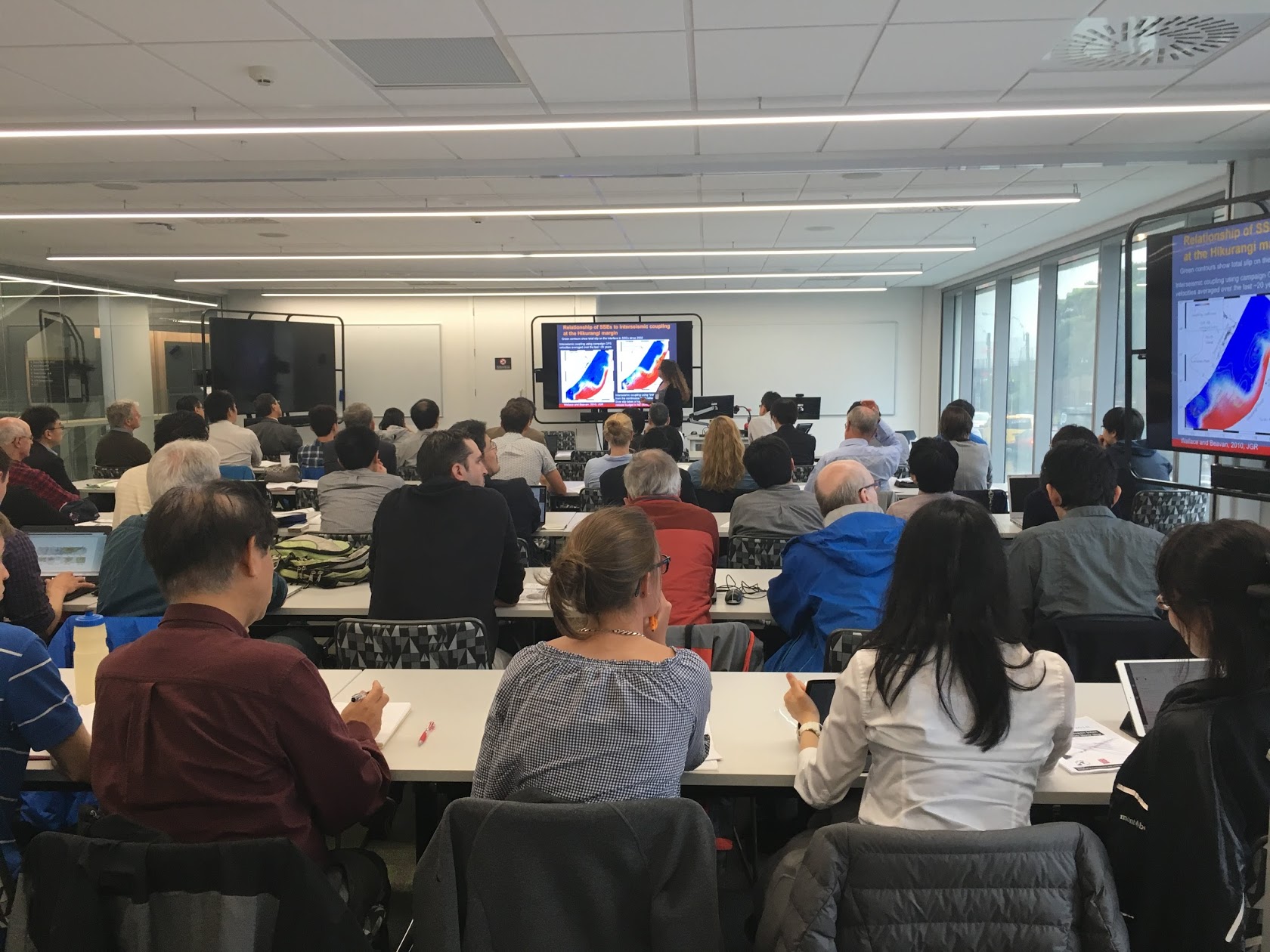
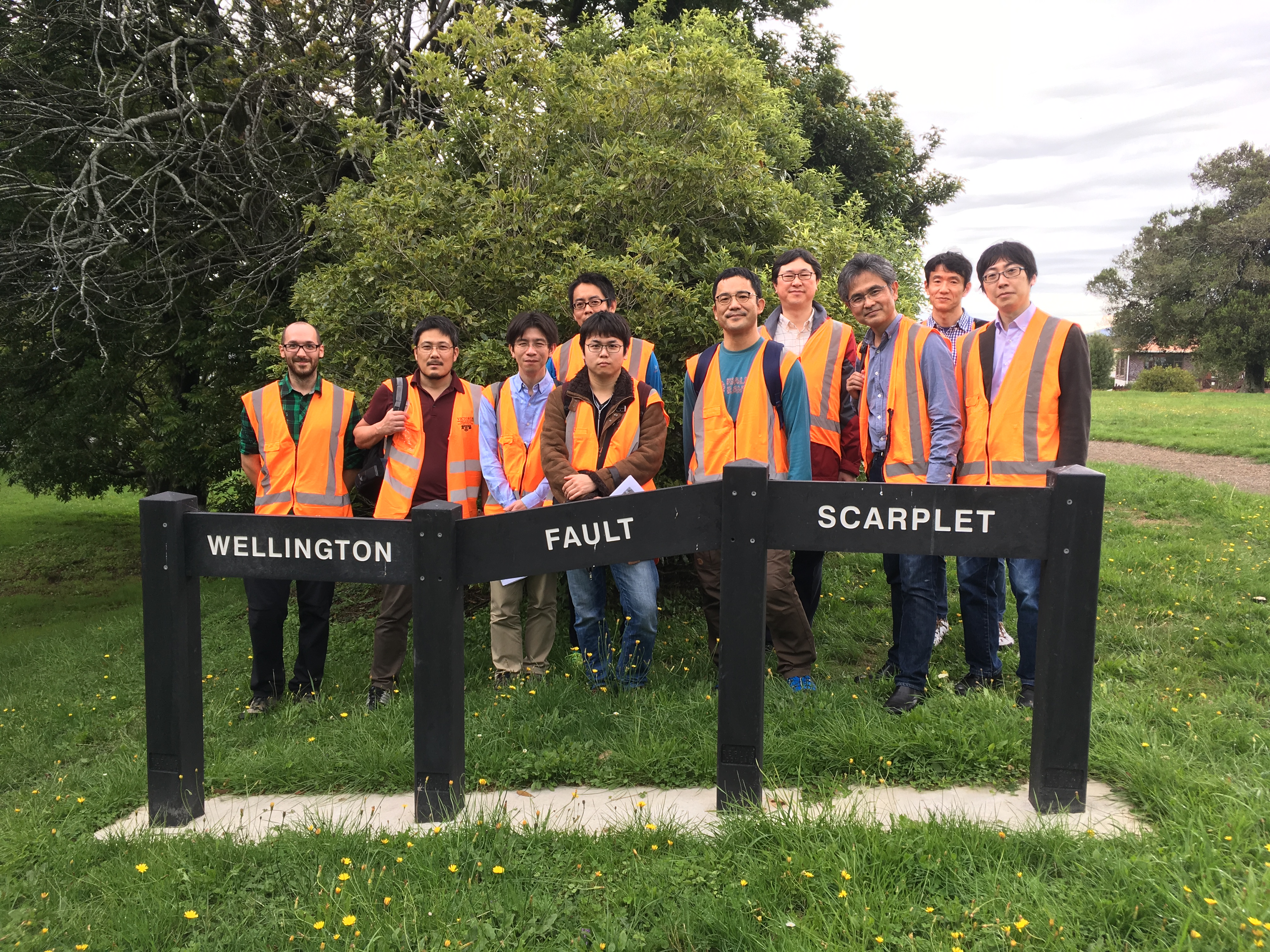
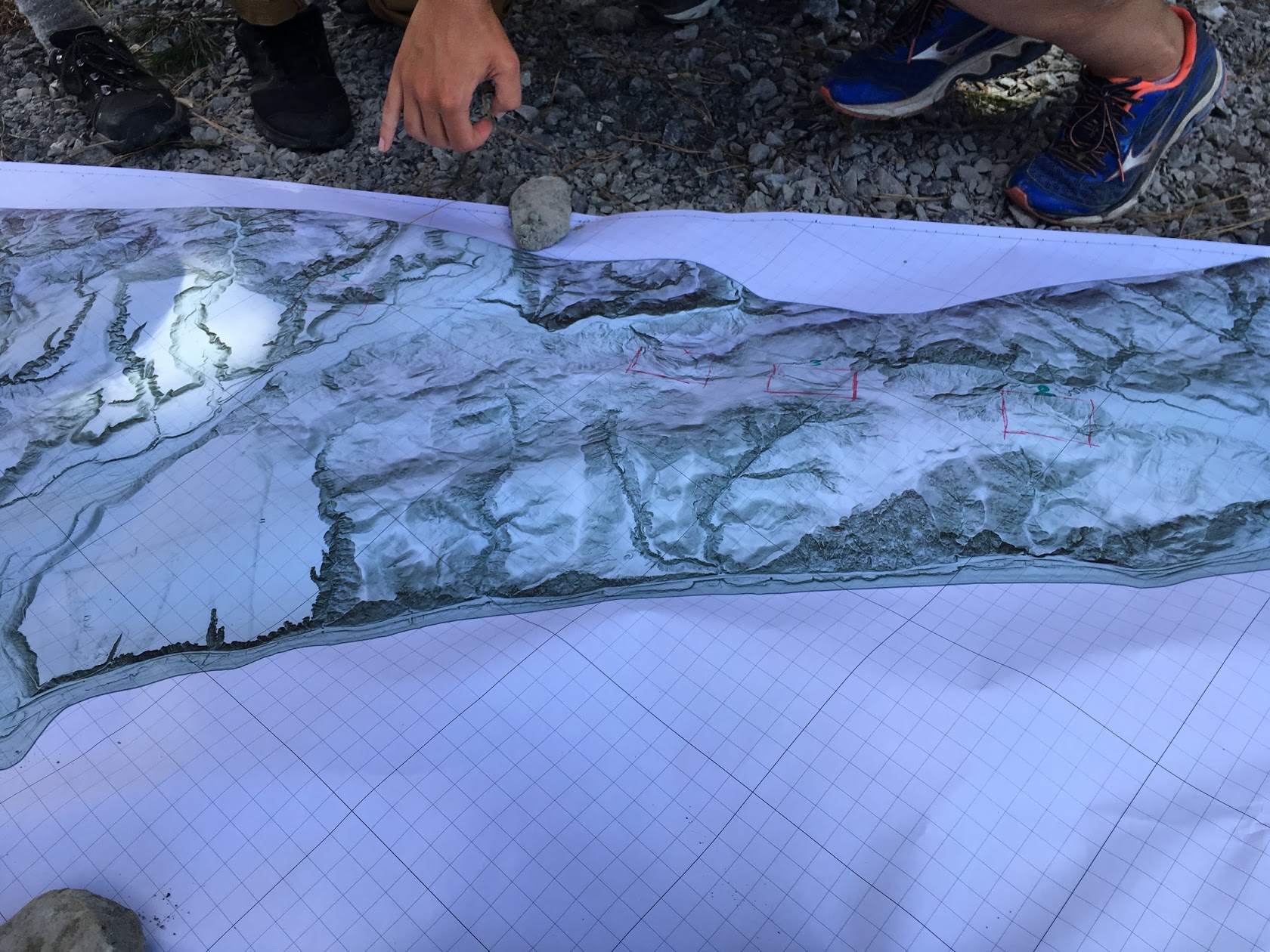
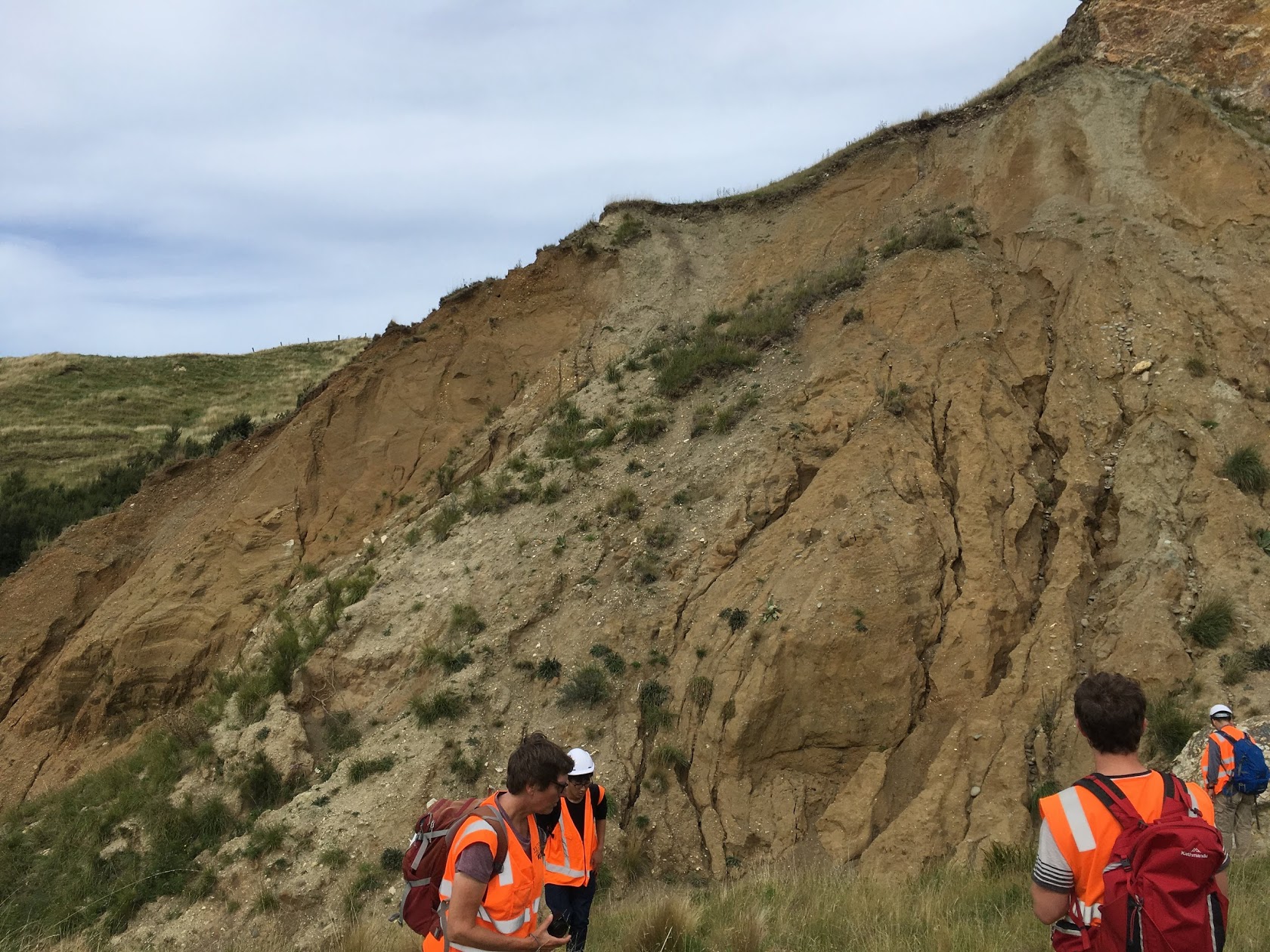
2018/02/21
Slow Earthquakes Group A01 Special Seminar
Dr. Natalia Poiata, researcher at Institut de Physique du Globe de Paris (IPGP), France, and National Institute for Earth Physics, Romania, will give a talk.
| Date/Time | 2018/02/21 (Wed.)15:00-16:00 |
|---|---|
| Venue | Seminar room, 2nd floor, Bld. 1, ERI Access Map |
| Speaker | Dr. Natalia Poiata (IPGP, National Institute for Earth Physics, Romania) |
| Title | An automated multi-scale network-based scheme for detection and location of seismic sources |
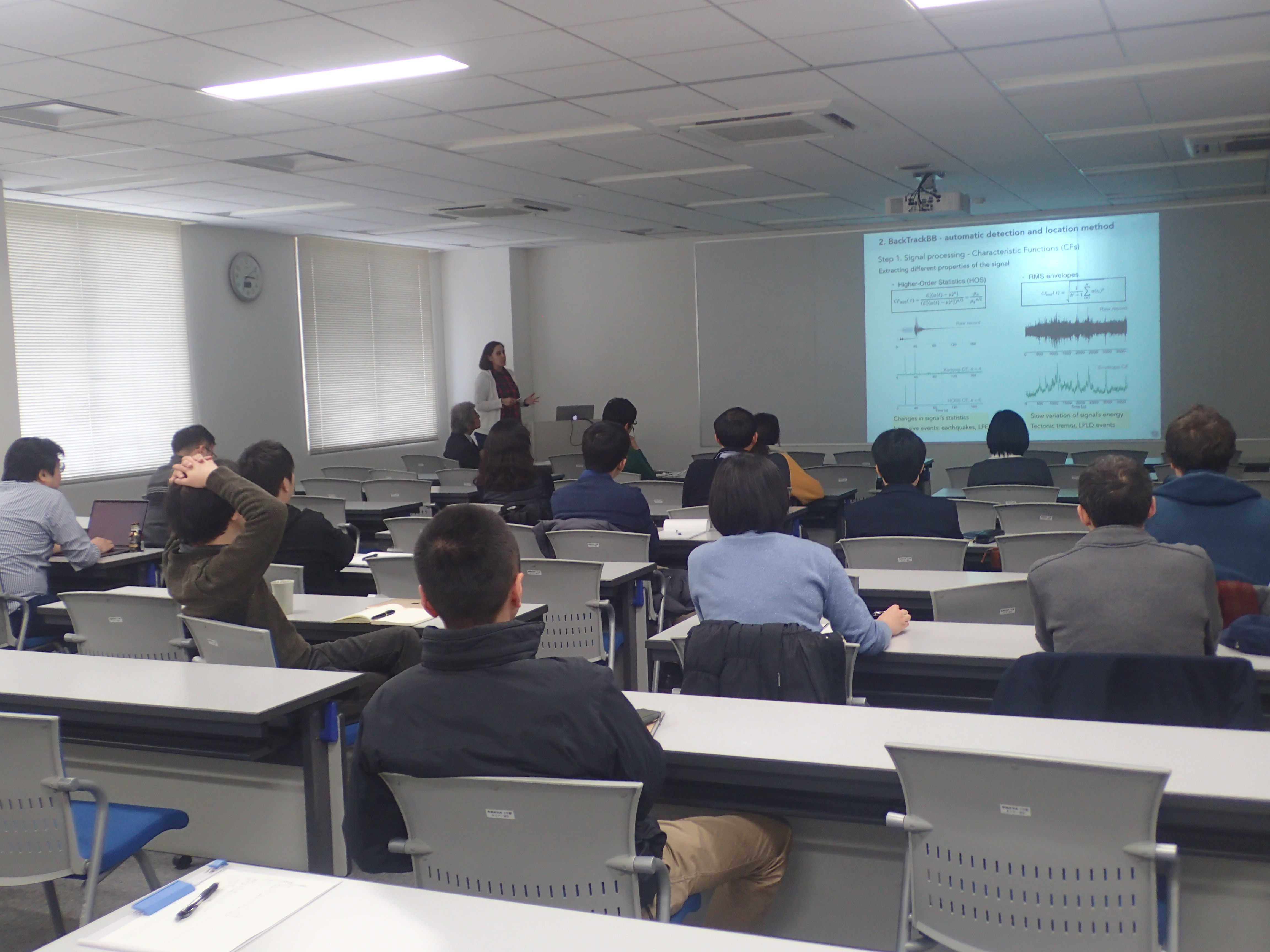
2018/01/12
"Friday Seminar" and "Slow Earthquakes Cafe"
Dr. Ryoko Nakata will give talks at both the ERI Friday seminar and Slow Earthquakes Cafe on the same theme.
| Date/Time | January 12, 2018 (Fri.) Friday seminar: 15:00-16:00 Slow Earthquakes Cafe: 16:15-17:30 |
|---|---|
| Venue | Friday seminar: Conference room, 3rd floor, Bld. 1, ERI Slow Earthquakes Cafe: Conference rooms A&B, 3rd floor, Bld. 1, ERI Access Map |
| Speaker | Dr. Ryoko Nakata(Japan Agency for Marine-Earth Science and Technology) |
| Title | "Geodetic data inversion for spatial distribution of long-term slow slip events beneath the Bungo Channel using sparse modelling" |
